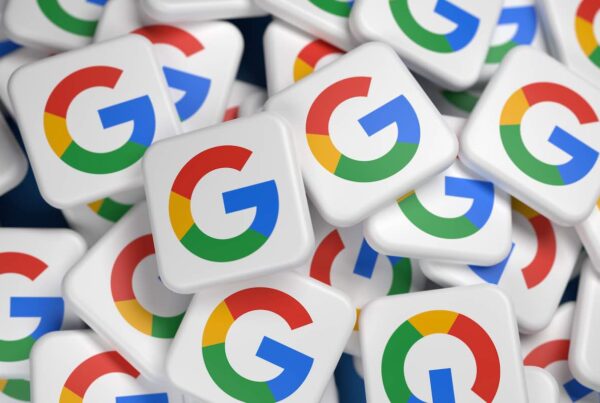In the past year, TikTok has taken the social media world by storm. With an estimated 1.7 billion users, 3.5 billion app downloads, and its endless creative potential, users can’t get enough.
For the sake of comparison, Facebook has an estimated 2.9 billion users.
It took these other platforms years to reach this level of ubiquity, and TikTok has breezed to the billion-user mark at lightning speed.
In fact, TikTok’s taken off so quickly that leading social media platforms have tried to keep up with the app’s success by mimicking its features.
For instance, Instagram’s Reels feature was introduced as a direct competitor to TikTok.
YouTube is pursuing the development of a feature called YouTube Shorts.
These allow for the creation of vertical videos up to 60-seconds in length and mix the functionality of Instagram Stories and TikTok.
Other apps like Triller and Byte have also iterated around TikTok’s successes.
That said, TikTok is here to stay.
In the unlikely event it fizzles out as a social platform, the style of content TikTok has popularized isn’t going anywhere, so it’s in your best interests to get on the bandwagon now.
If you’re like many business owners or marketing managers, you’re probably wondering what exactly is TikTok, should your brand be on TikTok, and what opportunities for content creation exist?
What Is TikTok?
TikTok is a video-sharing social networking app owned by ByteDance. You may recognize it as musica.ly, an app ByteDance bought in 2017 and evolved into the TikTok we know today.
On TikTok, you can create short lip-syncing and dancing videos with popular songs, remix titles, browse music, or share your own creations through use of the platform’s filters and effects.
What is TikTok’s “For You” Page?
One of the most popular questions any non-user will ask about TikTok is “What is the For You Page?“
This is a page of trending and suggested content curated by TikTok’s algorithm. It’s similar to Instagram’s Explore page, where content is displayed based on your individual activity on the platform.
“For You” suggestions come from the trend of videos the user likes and engage with. In that way, it is 100% personalized based on your behavior.
For example, if you frequently like, comment, and spend time viewing videos about the NBA, your personalized “For You” page will begin showing you more and more videos about the NBA.
Secondarily, you may see content related to sports in general.
Aside from the “For You” page, there is another feed specifically for content from pages you follow.
TikTok Statistics and User Demographics
- TikTok’s Beijing-based parent company, Bytedance, is valued at $78 billion, making it one of the world’s most valuable tech startups.
- TikTok reports that its users are roughly 60% female, 40% male.
- Almost 50% of TikTok’s global audience is under the age of 34.
- 26% of all TikTok users are between the ages of 18 and 24.
- TikTok has massive worldwide reach: 466 million users are from India; 173 million from China; 123 million from the U.S.
- The average TikTok user spends 52 minutes per day on the app.
How Does TikTok Compare to Other Social Platforms?
For starters, TikTok’s algorithm offers more organic growth potential than any other major social platform.
Other platforms, like Facebook and Instagram, prevent your content from being pushed to all of your followers, let alone non-followers in the broader community.
Consequently, you need to post for months or even years on other platforms to gain a following.
On TikTok, you can gain a significant following in just a matter of days. This low bar to entry is what makes TikTok so appealing to brands, creators, and influencers.
How Does TikTok’s Algorithm Work?
At a high level, TikTok’s algorithm works in this way:
- The platform shows a new post to a small group of people (both followers and non-followers) who are likely to be interested in the content. This is why you might see a video with very few views on your “For You” page.
- Depending on the engagement from that small group, TikTok continues to expose the post to more and more people — constantly taking in the user engagement data and allowing user behavior to dictate the popularity of content.
- Once your post hits a certain threshold of “approval” by the community, TikTok throttles the post, essentially making it viral content.

TikTok’s algorithm is different from other platforms in this way. Social networks like Facebook and Instagram heavily filter content in feeds.
They may only push your post to 15-20% of your own followers, if you’re lucky. Much less purposely building niche targeted audiences for your posts.
And though TikTok has a lot of users, the competition levels in the feed aren’t nearly as high as on other platforms. This is especially true between organic and paid posts.
In simple terms: there is less content being produced and fewer ads being placed on TikTok. That means there’s more inventory available in the TikTok feed, which creates opportunities to stand out organically.
Along with this low barrier for entry and opportunities to rapidly grow an organic presence, TikTok encourages community engagement similar to that of early Instagram and Facebook days.
Since its relevance relies on current videos, TikTok has become a revolving door for new Internet trends and challenges.
These trends have expanded well beyond the platform, even frequently reaching mainstream headlines.
And TikTok doesn’t fall short of creative tools or features, either.
What Creative Tools Can I Use on TikTok?
Impressively, TikTok feeds you more tools to create unique videos than most other social platforms. These tools are what closely tie the TikTok community together.
TikTok’s duet feature is especially unique. It allows you to make reaction videos in response to what other users post. The duet feature layers an additional social aspect to the platform.
Another example is the use of music in posts.
When someone uses a specific song or sound overlay in a post, the platform creates a “collection” of all TikTok posts that used that same audio selection.
There’s an option on every post to see who else used that sound, exposing you to that collection of content and giving an option to use it yourself.
And that’s the same for video effects.
If someone uses the “earthquake” effect, for example, the effect gets tagged in the video.
If you hit the button to remake the video, TikTok gives you the option to use the effect in your post.
Conceptually, these collections of content are similar to hashtags in that they organize related content.
But TikTok added multiple new layers with trends, music, and video effects — all of which enhance the social nature of the platform.
How Can Brands Advertise on TikTok?
Now we know what TikTok is, but how can it benefit your business?
Advertisers could use influencers, but TikTok also offers a handful of very targeted formats to help boost awareness.
From Hashtag Challenges to Takeovers, TikTok is encouraging businesses to take part in the culture of the app, which is mixing ads and content all in one.
This approach has some ads blending so well into the feed that you don’t even know it’s an ad.
That’s the pinnacle of native advertising, with all the benefits of user-generated content.
TikTok Ad Placements and Formats
Besides partnering directly with influencers on the platform, there are a handful of ways brands can advertise on TikTok. We’ve outlined five of the most common ad types below:
- Brand Takeover Ads
- Top-View Ads
- In-feed Ads
- Hashtag Challenges
- Branded Effects
Brand Takeover Ads
Brand Takeovers are a great way to guarantee exposure for your ad. These are similar in format to the video ads you might see in Instagram or Snapchat Stories.
Brand Takeovers are just as they sound: the moment a user opens the app, the video ad will take over the full screen.
This ad type supports between 5 to 16-second videos and is one of the most effective ways to guarantee prime exposure. Unfortunately, that also makes it one of the most expensive placements and probably out of reach for most small businesses.
Top-View Ads
TikTok’s Top-View ads are similar to Brand Takeovers in that they’re a full-screen video format and effectively grab the user’s attention.
Where top-view ads differ is they allow up to a 60-second video and can also appear directly in the user’s feed as they’re scrolling.
For that reason, top-view ads demand that the very beginning of your ad must grab the user’s attention.
That user is actively scrolling through posts and aren’t going to waste time on anything that doesn’t entertain them immediately.
In-Feed Ads
In-feed ads appear on the “For You” page, in-between user content. This means they bleed in as user-created videos.
They allow up to 60 seconds and encourage user engagement via liking, sharing, dueting, comments, and more.
Additionally, you can include call to actions and links to company websites or app downloads.
Branded Hashtag Challenges
TikTok allows you to create branded hashtag challenges that generate user engagement far beyond swiping and clicking. This requires users to participate and be creative with the themed content, delivering high levels of brand awareness.
There is an option to pay for these challenges to be featured on the Discover banner to increase awareness.
When users click the hashtag, they’ll be taken to a landing page. That page describes the challenge, shows more videos, and provides links to a company website.
Branded Effects
These are creative tools used when making videos. Much like Snapchat lenses, they usually catch on organically. Some examples are sharable stickers, filters, and special effects.
With fewer barriers on the communication front, branded effects are perfect for increasing awareness.
Plus, they open your brand up to opportunities that breach language and cultural barriers.
Think “Big Picture” with TikTok
All of these advertising tools work great individually. But much like we always preach at NerdBrand, approaching branding and marketing holistically is key.
Instead of running an in-feed or top-view ad campaign in isolation, coordinate your ad buy with the release of a hashtag challenge.
Then, have 5-7 influencers prepared to post a video participating in that hashtag.
Running a cross-placement approach is incredibly effective at grabbing attention and helping build a library of user generated content.



